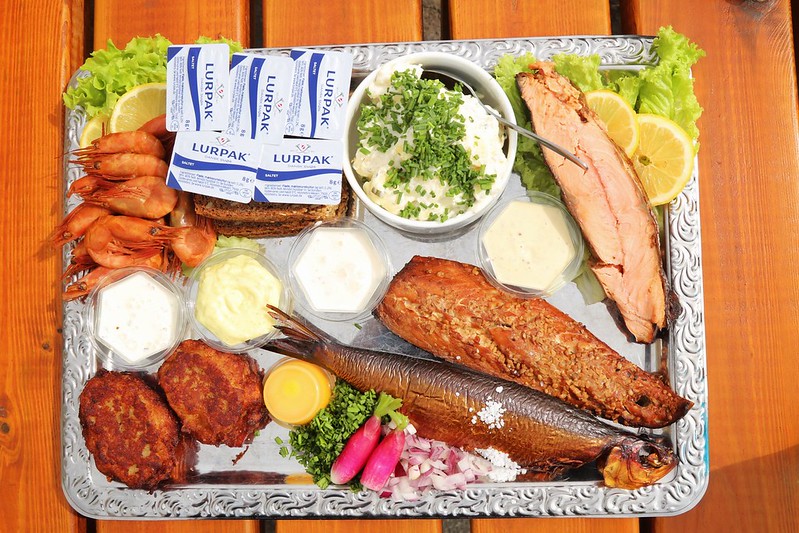Introduction to Danish cuisine
Denmark, a Scandinavian country situated in northern Europe, has its unique cuisine characterized by a blend of traditional and modern flavors. Danish cuisine features a wide range of dishes that reflect Denmark’s agricultural heritage and its coastal location. Danish food is largely based on fresh, locally available ingredients and is often simple but flavorsome.
The cuisine is known for its emphasis on the use of high-quality ingredients, seasonal produce, and sustainable farming practices. Danish dishes are also famous for their unparalleled taste, texture, and presentation, making it popular among locals and tourists alike.
Meat and fish in Danish dishes
Meat and fish are staples in Danish cuisine. Pork, beef, and poultry are the most popular meats used in Danish cooking. The Danes are known for their love of pork, and it is the most commonly consumed meat in the country. Beef is also popular, especially in stews and soups. The Danish cuisine also features a great variety of fish dishes, thanks to its coastal location. Cod, herring, and salmon are the most commonly used fish in Danish cuisine.
Danish meatballs, known as Frikadeller, are a popular dish that uses ground pork or beef mixed with breadcrumbs, eggs, and spices. Smørrebrød, an open-faced sandwich, is another famous Danish dish that often features fish, meat, or vegetables on top of a slice of rye bread.
Dairy in Danish cuisine
Dairy products are an essential part of Danish cuisine. Milk, cheese, and butter are the most commonly used dairy products in Danish dishes. The Danes are known for their excellent dairy products, and Danish cheese is famous worldwide. The most popular cheeses in Denmark include blue cheese, Havarti, and Danbo.
The Danes also use dairy products to make desserts such as rice pudding, which is a popular dish during Christmas. The Danish butter is also known for its high quality and is used in many baked goods and other dishes.
Root vegetables in Danish cooking
Root vegetables are a staple in Danish cuisine, especially during the winter months. Potatoes, carrots, beets, and turnips are the most popular root vegetables used in Danish cooking. These vegetables are often boiled or roasted and served as a side dish.
One popular Danish dish that features root vegetables is Rodgroed, which is a dessert made of boiled beets, sugar, and cornstarch. The dish is often served with cream or milk.
Berries and fruit in Danish recipes
Denmark is known for its vast array of berries and fruit. The most commonly used fruits in Danish cooking include apples, pears, and plums. Berries such as strawberries, raspberries, and blackberries are also popular in Danish cuisine.
One popular Danish dish that uses berries is Rødgrød med Fløde, which is a dessert made of mixed berries, sugar, and cornstarch. The dish is often served with cream or milk.
Grains and bread in Danish food
Grains and bread are an essential part of Danish cuisine. Rye bread is a staple in Danish food and is often served with butter or cheese. The Danes are also known for their love of pastries, which often feature grains such as wheat and oats.
The iconic Danish pastry, known as the “Danish,” is a buttery, flaky pastry that is often filled with fruit or cheese. Another popular pastry in Denmark is the “Kanelbullar,” which is a cinnamon roll.
Spices and herbs used in Danish dishes
Spices and herbs are used sparingly in Danish cuisine. The most commonly used herbs in Danish cooking include parsley, dill, and chives. The Danes also use spices such as cinnamon, nutmeg, and cloves in their dishes, especially during the winter months.
Sauces and condiments in Danish cuisine
Sauces and condiments are not as prevalent in Danish cuisine as they are in some other culinary traditions. The most commonly used condiments in Danish food include mustard and pickles. Gravy is also a popular sauce used in Danish dishes, especially when serving meat.
In conclusion, Danish cuisine is characterized by fresh ingredients, simple preparation methods, and a focus on seasonal produce. The use of dairy products, root vegetables, berries, and fruits is prevalent in Danish dishes, while meat and fish are staples in the cuisine. The use of herbs and spices is minimal, and sauces and condiments are not commonly used in Danish food. Danish cuisine is a delightful blend of traditional and modern flavors that is sure to satisfy any food lover’s palate.

